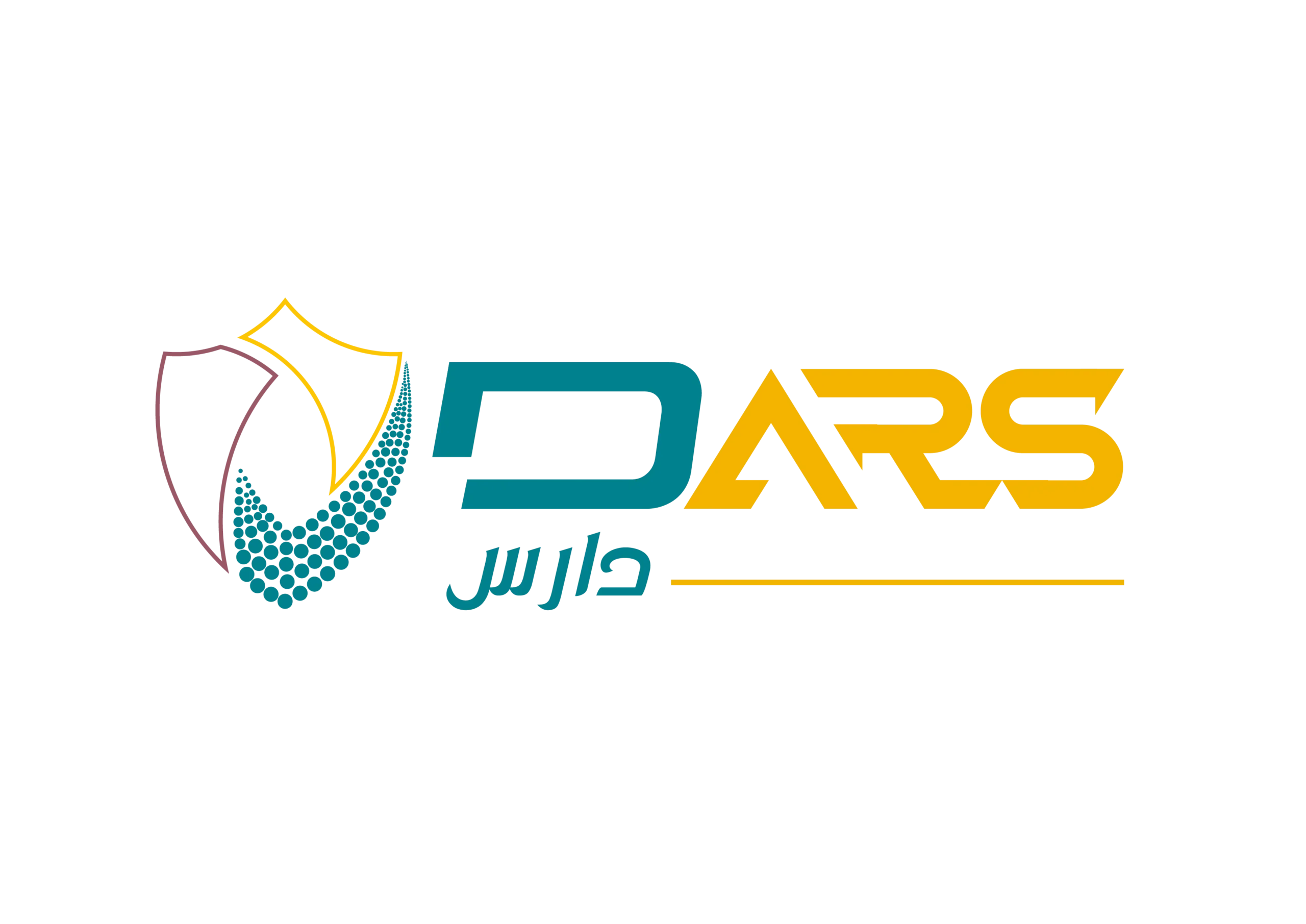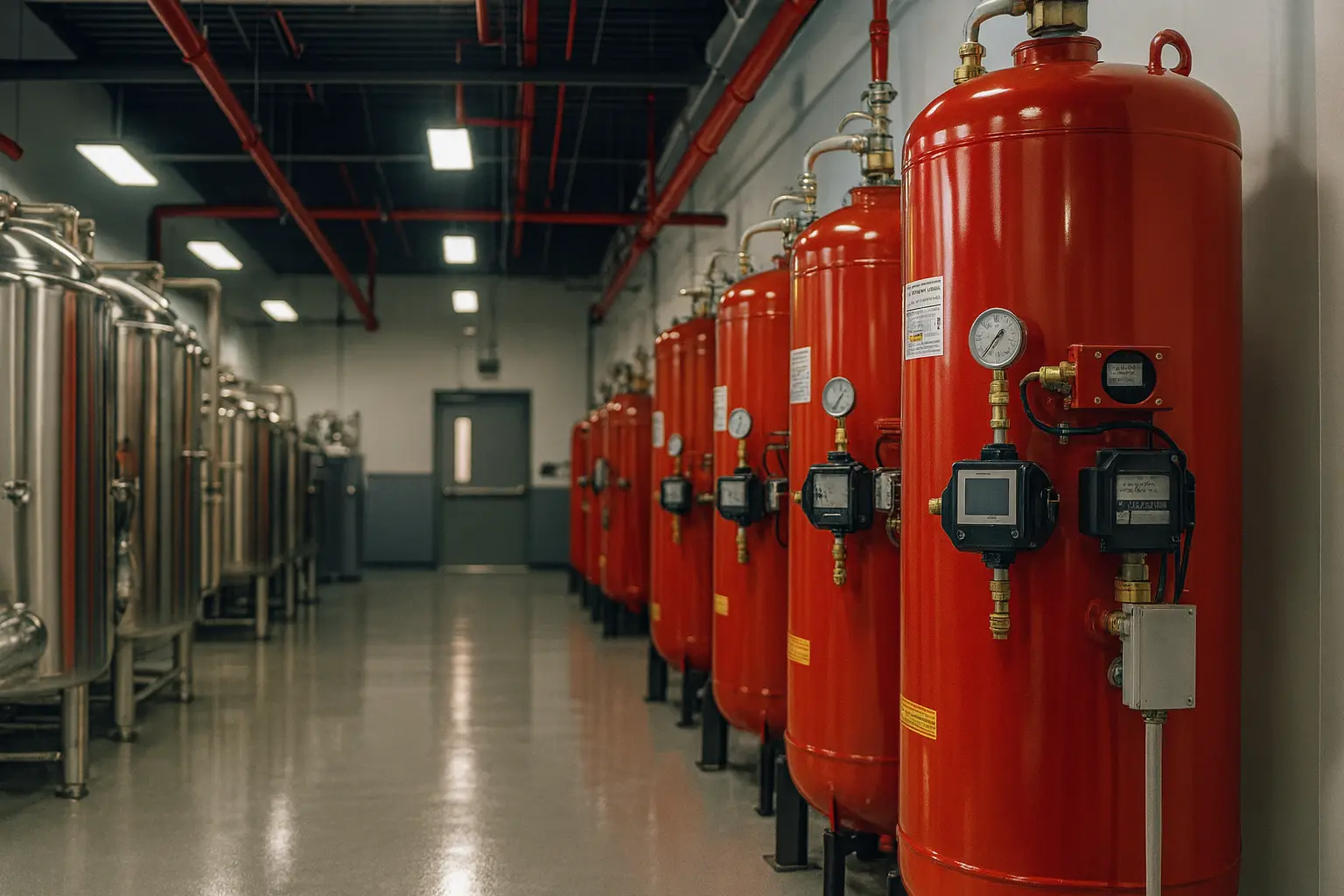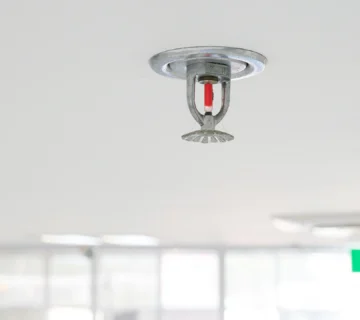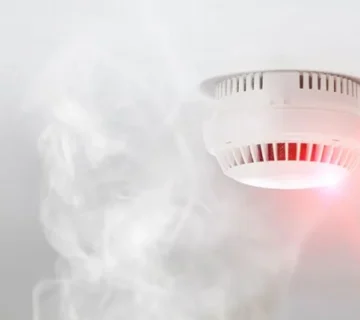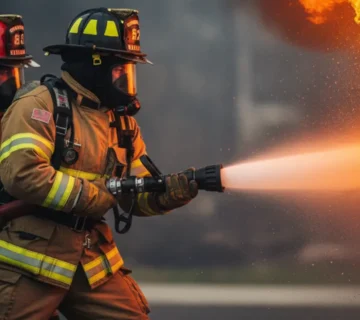Fire safety in modern facilities goes far beyond traditional sprinklers and extinguishers. Today, advanced fire suppression technology plays a critical role in protecting valuable infrastructure, especially where water-based systems could cause more harm than good. Among these innovations, gas suppression systems have emerged as an indispensable solution in Saudi Arabia, where compliance with Saudi Civil Defense requirements, the Saudi Building Code, and global NFPA fire protection standards is non-negotiable.
What Is a Gas Suppression System and Why It Matters
A gas suppression system is a specialized method of extinguishing fires without using water or foam. Instead, it relies on clean gases or chemical agents that suppress flames by either reducing oxygen levels, absorbing heat, or interrupting chemical reactions. This makes them ideal for facilities where electronics, archives, or industrial machinery are at risk of severe damage from conventional firefighting techniques.
In Saudi Arabia, the relevance of gas suppression is amplified by the country’s rapid industrialization, digital transformation, and the need to safeguard mission-critical assets. From oil and gas facilities to corporate data centers, these systems are a cornerstone of data center fire safety and industrial continuity. Choosing the right type not only ensures compliance with local regulations but also protects property and lives, aligning with DarAlhmaya’s mission as one of the region’s trusted security and safety companies.
What Are the Common Types of Gas Suppression Systems?
The world of gas suppression is diverse, with each system type designed for specific applications and hazards. While the principle is the same rapid, clean fire control the technology and environmental considerations vary.
Carbon Dioxide (CO2) Systems
CO2 systems work by displacing oxygen, making it impossible for a fire to continue burning. They are among the oldest and most reliable forms of gas suppression, often used in industrial spaces, engine rooms, and power plants.
The advantage lies in their effectiveness and availability. However, because CO2 is toxic at high concentrations, these systems require strict safety protocols to protect personnel during discharge. Operators must implement warning alarms and evacuation procedures before activation.
Inert Gas Systems (e.g., Nitrogen, Argon, Inergen)
Inert gas systems use naturally occurring gases to reduce oxygen levels just enough to stop combustion while remaining safe for humans. This balance makes them a preferred choice in offices, control rooms, and archives where personnel might still be present.
They are also environmentally sustainable because the gases used are abundant in the atmosphere, leaving no harmful residue or global warming impact. For companies in Saudi Arabia aiming to align with Vision 2030 sustainability goals, inert gas solutions provide a forward-looking answer to fire safety.
Clean Agent Systems (e.g., FM-200, Novec 1230)
Clean agent systems represent one of the most widely adopted advanced fire suppression methods, especially in data-driven industries. These systems work by absorbing heat and interrupting combustion at the molecular level.
FM-200 solutions and Novec 1230 are particularly popular in data center fire safety, telecommunications hubs, and healthcare facilities. Their main appeal is speed they suppress fires within seconds while leaving no residue that could damage sensitive electronics.
Water Mist Systems
Though technically hybrid, water mist systems deserve mention because they bridge the gap between traditional sprinklers and gas suppression. They use fine water droplets to cool flames and displace oxygen with steam, causing minimal water damage compared to standard sprinklers.
These systems are particularly effective in heritage sites, museums, and even server rooms, where protecting assets from both fire and water damage is equally important.
What Are the Key Benefits of Using Gas Suppression Systems?
Gas suppression systems offer distinct advantages that explain their increasing adoption across Saudi Arabia’s industrial and commercial sectors.
First, they protect sensitive electronics and valuable equipment without causing collateral damage. In environments like data centers, laboratories, or broadcasting facilities, this is a decisive factor compared to water-based solutions.
Second, they minimize downtime. Because systems like FM-200 or inert gases leave no residue, operations can resume shortly after an incident. This ensures both business continuity and cost savings.
Finally, many modern gas suppression options are environmentally friendly, aligning with sustainable fire suppression systems principles. Solutions like inert gases and Novec 1230 meet global standards for ozone protection while offering reliable performance.
What Regulations Apply to Gas Suppression Systems in Saudi Arabia?
Saudi Arabia enforces strict regulatory oversight on fire safety systems to ensure public safety and business continuity. Any system installed must comply with the Saudi Civil Defense requirements, the Saudi Building Code (SBC), and international standards like the NFPA fire protection standards.
Certification is mandatory, and systems undergo rigorous testing and maintenance protocols. This ensures that gas suppression systems remain reliable when needed most. For contractors and facility managers, working with licensed providers like DarAlhmaya ensures compliance while benefiting from local expertise.
How Are Gas Suppression Systems Designed and Installed?
Designing a gas suppression system begins with an in-depth risk assessment. Engineers evaluate the hazards specific to a facility, whether it is a data center, a petrochemical plant, or a heritage site. This evaluation determines not only which suppression agent is most suitable but also the scale and configuration of the system.
System sizing is a critical step. Calculations must establish the correct agent quantity, pressure levels, and discharge times. Too little gas risks incomplete suppression, while overfilling can increase costs and present unnecessary safety risks. Tools based on NFPA fire protection standards guide these calculations to ensure consistency with global benchmarks while meeting Saudi-specific regulations.
Integration is another important layer. Gas suppression systems do not function in isolation; they are connected to fire alarms, smoke detectors, and building management systems. This creates a coordinated response where detection, notification, and suppression happen within seconds, significantly reducing fire spread and potential damage.
Finally, personnel safety is always factored into the design. CO2 systems, for example, require alarms and delay mechanisms to allow evacuation before discharge. Clean agent systems, such as FM-200 solutions, are often preferred in occupied spaces because they are safe for humans while still highly effective at extinguishing flames.
Installation and Commissioning
Once designed, the installation phase requires precision. Certified contractors like DarAlhmaya ensure every pipe, nozzle, and cylinder is positioned according to the plan. Misalignment or leakage can render a system ineffective, which is why installation is subject to rigorous Civil Defense inspections in Saudi Arabia.
Commissioning follows installation, involving detailed testing to confirm the system responds correctly to simulated fire conditions. In many cases, this includes discharging a test agent or conducting pressure verifications. Documentation is mandatory, creating a record that the system complies with both the Saudi Building Code and relevant international standards.
What Are the Common Challenges and Considerations?
Despite their effectiveness, gas suppression systems face unique challenges that facility managers must carefully address. One of the most critical issues is ensuring airtightness in the protected room. Without adequate enclosure integrity, gases can leak, reducing concentration levels below what is needed to suppress a fire. Regular room integrity tests help confirm reliability.
False discharges are another concern. A system triggered unnecessarily can disrupt operations, create safety hazards, and incur significant refilling costs. To reduce this risk, high-quality detectors, smart controls, and proper maintenance schedules are essential.
Environmental considerations also play a role. While clean agent systems like Novec 1230 are environmentally safe, others may have a higher global warming potential. Balancing sustainability with performance is increasingly important, particularly as Saudi Arabia aligns its safety standards with global environmental goals.
Training is equally vital. Employees must understand evacuation procedures, alarm signals, and post-discharge protocols. Without clear knowledge, even the best automatic fire suppression system may fall short of protecting lives during a real incident.
Balancing Performance and Compliance
One of the defining features of the Saudi market is the strict oversight applied to safety systems. The Saudi Civil Defense does not only approve designs at the initial stage but also requires regular inspections, certifications, and maintenance logs. This ensures systems are not only installed but remain reliable over time.
For companies, this creates an ongoing responsibility. A system that worked perfectly when installed may fail years later without proper servicing. Reputable contractors ensure continuous compliance by offering inspection and maintenance packages tailored to the demands of the Civil Defense and international benchmarks.
What Are the Latest Trends and Innovations?
The fire safety industry is undergoing rapid transformation, with research and engineering pushing the limits of what gas suppression systems can achieve. One of the most notable trends is the development of environmentally sustainable agents. While CO2 and FM-200 have served industries for decades, new alternatives such as Novec 1230 are gaining popularity for their low global warming potential and negligible impact on the ozone layer. This shift is especially relevant in Saudi Arabia, where sustainability goals are directly tied to Vision 2030 initiatives.
Another major innovation is the rise of smart monitoring systems. Modern gas suppression installations can now integrate with IoT devices, offering real-time diagnostics, predictive maintenance alerts, and remote control capabilities. This allows facility managers to detect leaks, verify cylinder pressures, and receive alerts long before a system is compromised, ensuring readiness without costly manual inspections.
Industry-specific customization is also on the rise. For instance, inert gas fire protection is being tailored for offshore oil rigs, while clean agent systems are optimized for large-scale data centers powering Saudi Arabia’s digital transformation. This trend highlights a move away from one-size-fits-all solutions toward precision-engineered designs that reflect the unique risks of each sector.
The Role of Sustainable Fire Suppression Systems
Sustainability has become a decisive factor in system selection. Whereas older systems often relied on gases with higher environmental impact, today’s facilities seek sustainable fire suppression systems that meet both regulatory and corporate responsibility standards. This demand is driving manufacturers to innovate with agents that balance efficiency, safety, and ecological responsibility.
Saudi Arabia’s commitment to reducing its environmental footprint has accelerated this trend. Companies looking to expand globally must demonstrate compliance with not only local Civil Defense rules but also international climate-conscious regulations. By investing in sustainable systems, businesses in the Kingdom gain both operational protection and reputational advantages, positioning themselves as leaders in responsible safety practices.
The Future of Fire Suppression Technology in Saudi Arabia
Looking ahead, the integration of advanced fire suppression methods with artificial intelligence could redefine fire protection strategies. AI-driven systems have the potential to analyze sensor data, predict risks, and automatically adapt suppression strategies to changing conditions. For example, a system could adjust gas flow depending on the size and intensity of a fire, using resources more efficiently while maximizing protection.
Another area of growth lies in cross-sector partnerships. As industries evolve especially in energy, aviation, and digital infrastructure gas suppression systems will increasingly form part of wider risk management strategies. This integrated approach combines safety, sustainability, and operational resilience into one cohesive framework, ensuring that investments in fire suppression contribute directly to business continuity.
Why Professional Expertise Matters
Despite the remarkable progress in gas suppression technology, success ultimately depends on proper implementation and maintenance. Without expert design, regular testing, and compliance with NFPA fire protection standards, even the most advanced system can fail when needed most.
This is where certified providers like DarAlhmaya play a crucial role. Their deep understanding of Saudi Civil Defense regulations and global benchmarks ensures that every project is not only technically sound but also legally compliant. From automatic fire suppression in data centers to specialized systems in oil and gas facilities, professional oversight guarantees reliable protection.
Conclusion
Selecting the right gas suppression system type is a decision that extends beyond compliance it is an investment in safety, sustainability, and long-term operational resilience. In Saudi Arabia, where industries range from petrochemical giants to high-tech data centers, the demand for tailored, environmentally conscious, and technologically advanced fire suppression solutions has never been greater.
By understanding the different system types, acknowledging their challenges, and embracing the latest innovations, organizations can safeguard both assets and lives. The future of fire safety in the Kingdom will be defined not just by adherence to standards but by forward-thinking adoption of sustainable fire suppression systems and advanced fire suppression methods. For businesses, partnering with experienced contractors ensures that safety remains at the heart of progress.
gas suppression system types ensure fast, clean fire protection for data centers, industries, and offices while meeting safety standards.
